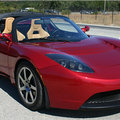LONG among the hottest items in Europe and Asia, ultraportable notebook computers — supercompact, lightweight laptops that slip into briefcases as easily as a legal pad — appear to be finding favor with American tastes. In cafes and corporate boardrooms and on college campuses, the sleek machines are in growing evidence.
Their increasing appeal to Americans, some ultraportable computer makers say, reflects the same attraction as ever-smaller music players and credit-card-size digital cameras, in both styling and mobility.
“The mind-set of the American consumer is changing,” said Mike Abary, vice president for Vaio product marketing at Sony Electronics in the United States. “It has come to place more value on mobile products. These ultraportable notebooks are mobile products, like cellphones and MP3 players.”
The small notebooks offer many if not most of the productivity and entertainment features popular in much larger, bulkier computers, like built-in optical drives for CD and DVD use. (Sorry, no high-definition Blu-ray or HD-DVD capabilities yet). They also tend to be more expensive than their larger counterparts — in some cases, four times as expensive — with prices just above $2,000.
The price notwithstanding, ultraportable notebooks can stir techno lust in even the most practically minded. In fact, computer makers say, one of the largest single groups buying ultraportables are businessmen and businesswomen.
“People want portability,” said Michael A. Vorhaus, managing director of Frank N. Magid Associates, a television and entertainment consultant company based in Los Angeles. “People want BlackBerrys for e-mail and cellphones for text messaging, but that is not enough.
“American consumers want a decent-sized screen,” said Mr. Vorhaus, who noted that a recent online survey indicated that 54 percent of Americans between 18 and 30 own a laptop. “They want 12- and 11-inch screens that they can slip into a briefcase or a backpack and do everything they want except make calls on it.”
The diminutive size of the ultraportables — although not so small to be confused with ultramobile personal computers, or UMPCs, which are practically palm-size — is not for everyone, said Stephen Baker, vice president for industry analysis at the NPD Group.
While affirming that ultraportables represent “a nice concept,” he questions whether the benefit of a smallish notebook computer is worth its premium price.
“It’s unclear what that gets you,” he said. “A couple of less pounds?”
Mr. Baker added that he generally considers computers with screens as large as 12 inches not in the ultraportable category. He draws the line at those under 10 inches.
While a precise definition of ultraportable varies, the broader attributes of the category are as easy to discern as telling a sports car from a sport utility vehicle. Standard notebook computers generally have screens that measure 15 inches or so when measured diagonally (17-inch screens are also popular, many retailers report). Many computer makers, including Toshiba, Sony and Hewlett-Packard, classify ultraportable notebooks as those with screens measuring 12 inches or less.
Computer makers note that when laptops have smaller screens, the rest of the computer must adhere to a proportionality that usually forces the keyboard — as well as the overall size of the computer — to be smaller than standard. In turn, the body thins and the computer gets lighter. Many ultraportable notebooks weigh around four pounds or less, while an entry-level Dell Inspiron 1501 notebook with a 15.4-inch screen, in contrast, weighs 6.19 pounds.
In past years, packing components so closely together to achieve what computer makers call a smaller “footprint” encouraged many laptop manufacturers to use less powerful microprocessors than those in larger computers to reduce heat and not overtax smaller batteries. But advances in microprocessor design and cooling systems have significantly reduced the need for such striking compromises, especially in the higher-priced ultraportable notebooks, experts say.
“We are excited about the fact that laptops can now pack more power into a smaller, more lightweight and energy-efficient package,” said Karen Regis, manager of the mobile platforms group at Intel.
Or as Mr. Abary of Sony put it, “Miniaturization is an art of engineering.”
Showcasing such engineering, he said, is the Vaio VGN-TXN15 by Sony, released this spring. It is part of the company’s TX series of full-featured, ultraportable notebooks. The TXN15 has an 11.1-inch screen in a wide (16:9) aspect ratio and weighs 2.8 pounds. Mr. Abary said much of the notebook’s economy of size, weight and strength was managed with innovative engineering as well as the use of carbon fiber for its chassis.
The Vaio TXN15, which costs $2,300, is powered by a 1.2-gigahertz Intel Core Solo Ultra Low Voltage microprocessor and, depending on use, offers a standard battery life of 5 to 11 hours, Sony engineers said. The TXN15 also features a fingerprint security sensor and is equipped with sensors to protect the hard drive if the notebook is dropped or severely jostled.
Besides its internal read-and-write DVD drive, the TXN15 includes Sony’s Instant Mode, which enables quick access to features like the notebook’s music and movie playback without running its operating system, Microsoft’s Windows Vista. Another extra is its built-in EV-DO system, which uses Sprint’s wireless cellular broadband network for mobile Internet access. The TXN15 has more conventional Wi-Fi ability as well.
And unlike some ultraportables, the TXN15 has not significantly shrunk its keyboard. Mr. Abary said the keyboard was near full size.
Another svelte and sophisticated new ultraportable notebook, the Fujitsu Lifebook P7230, weighs 2.63 pounds, even less than the Sony TXN15, and is encased in a stylish magnesium body. Its screen is smaller, too — 10.6 inches. This notebook is fully featured and powered by a 1.2-gigahertz Intel Core Solo microprocessor. Depending on a long list of options, its price ranges from $1,650 to $2,180.
Breaking the three-pound barrier is a major factor in achieving an “unconsciously portable” state, said Paul Moore, senior director of mobile products and marketing for Fujitsu Computer Systems. That, he explained, is the top weight so “you don’t realize you have it.”
Averatec, a South Korean company with an office in Santa Ana, Calif., is a relative newcomer to notebook computers, which it has been making since 2002. The Averatec 2371, its latest ultraportable notebook, which has a 12.1-inch screen and weighs about four pounds, aims to be a solid performer but light on the budget, said Darren Lee, the company’s director of product marketing.
The 2371 costs $900 to $950, depending on options, and is available on the company’s Web site (www.shopaveratec.com) and from other online retailers. This month, Averatec will introduce a smaller and lighter ultraportable, the 3.4-pound 1579, at $1,300.
Averatec ultraportables, widely available online and at stores like Circuit City, Sam’s Club and Staples, cost $850 to $950.
“We don’t have the buying power of the rest of the guys,” Mr. Lee said. “We chose to take a margin percentage hit, and they do not.”
Like the computers the company makes, he said, “we are a very small organization.”




